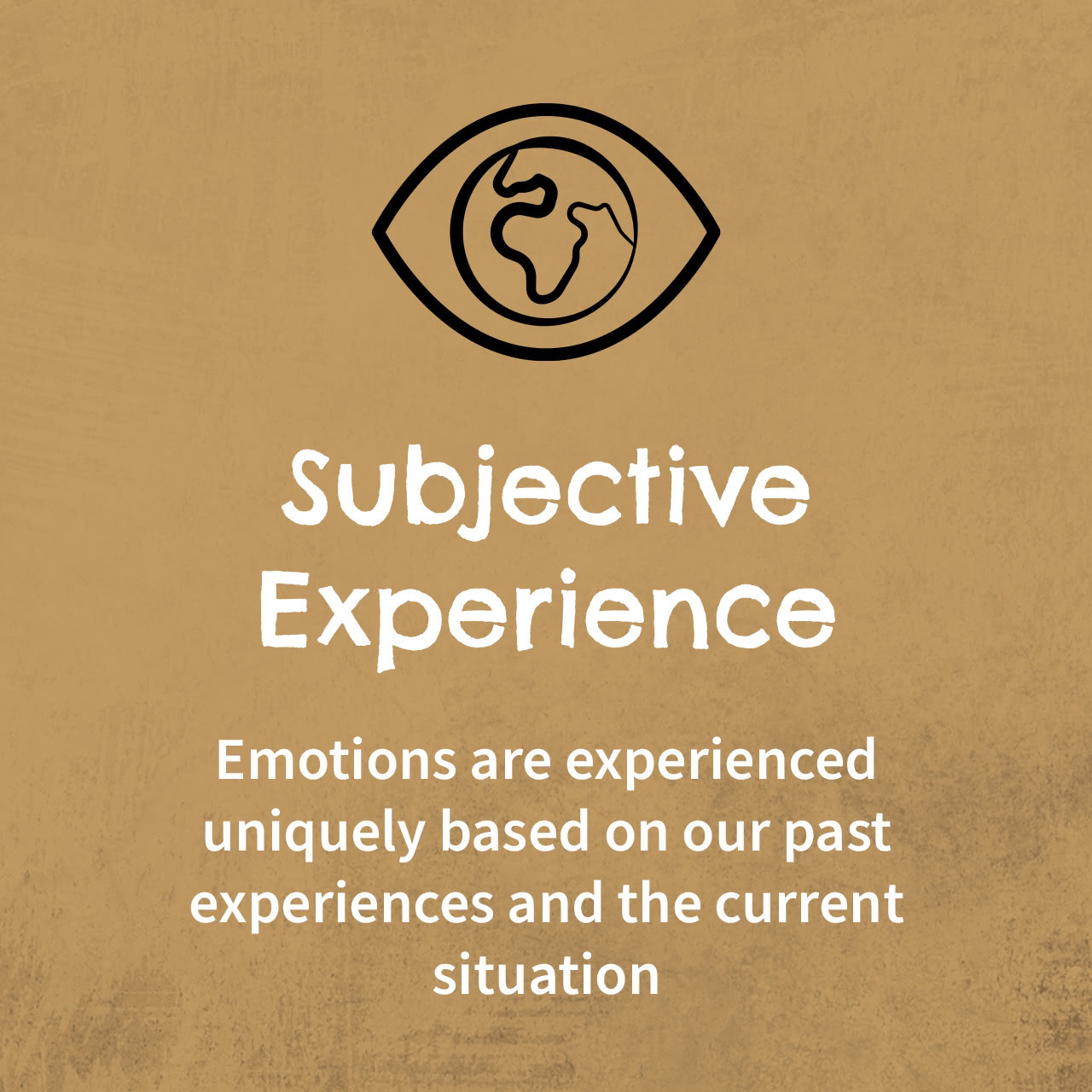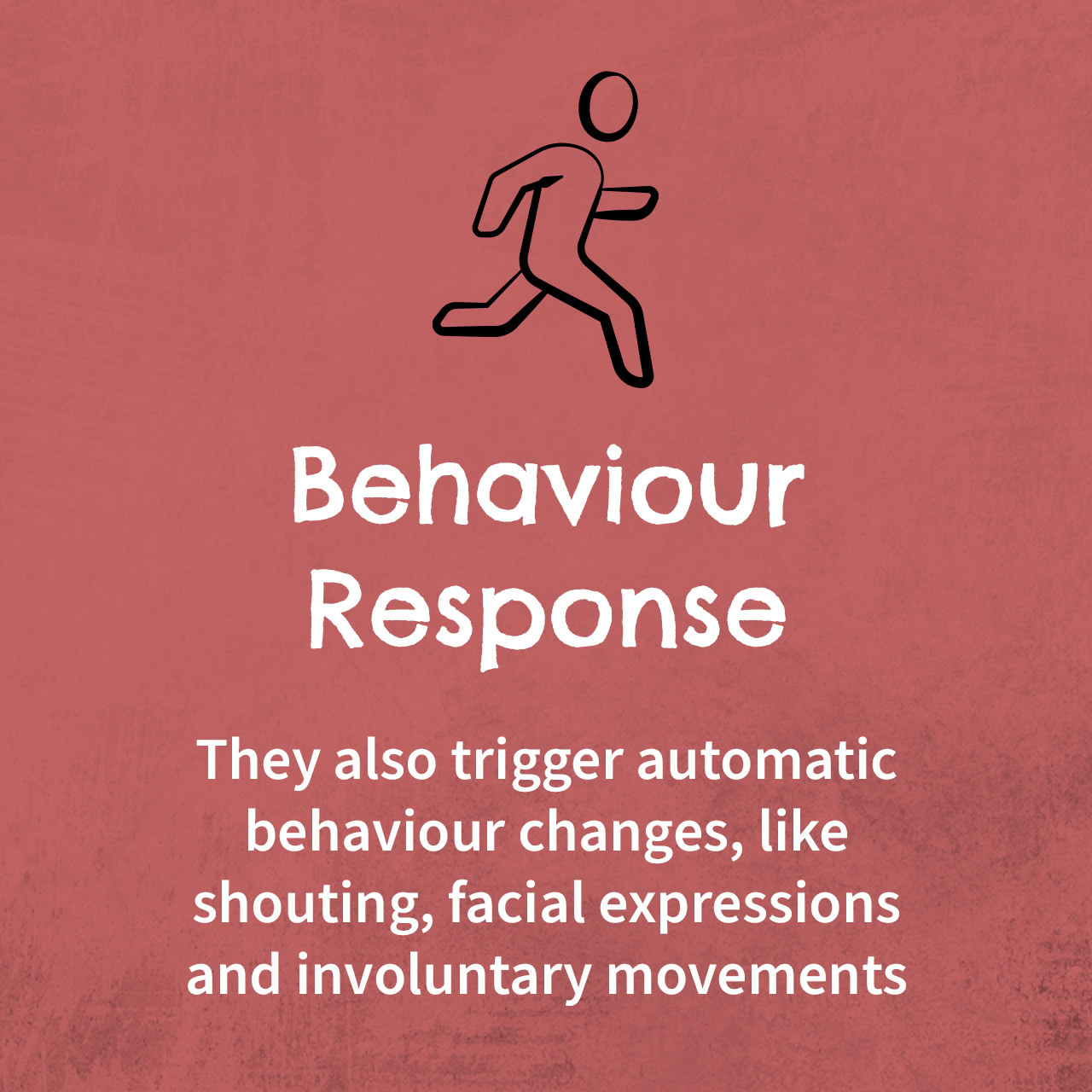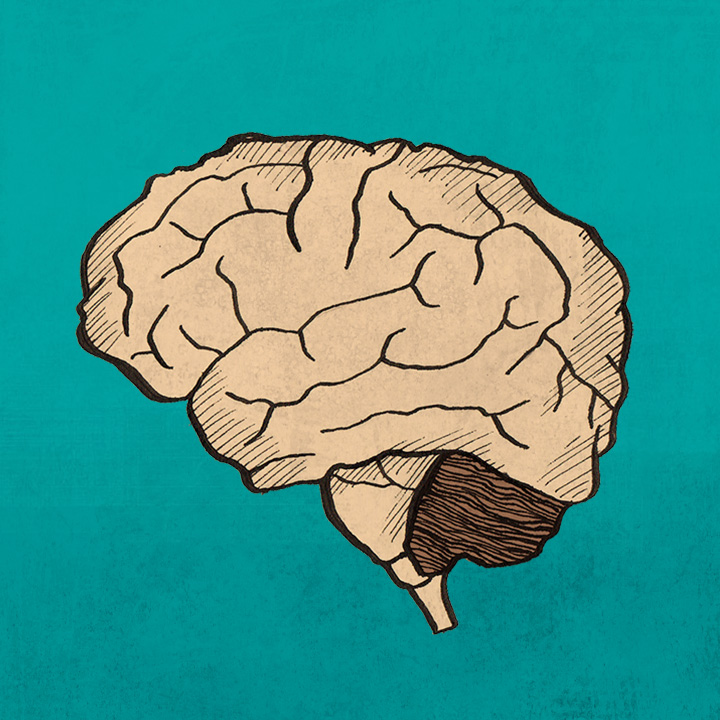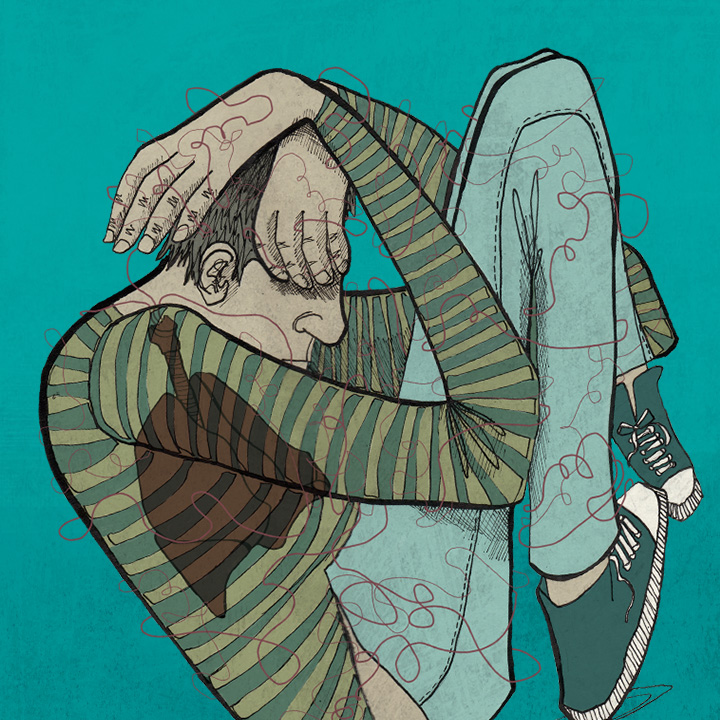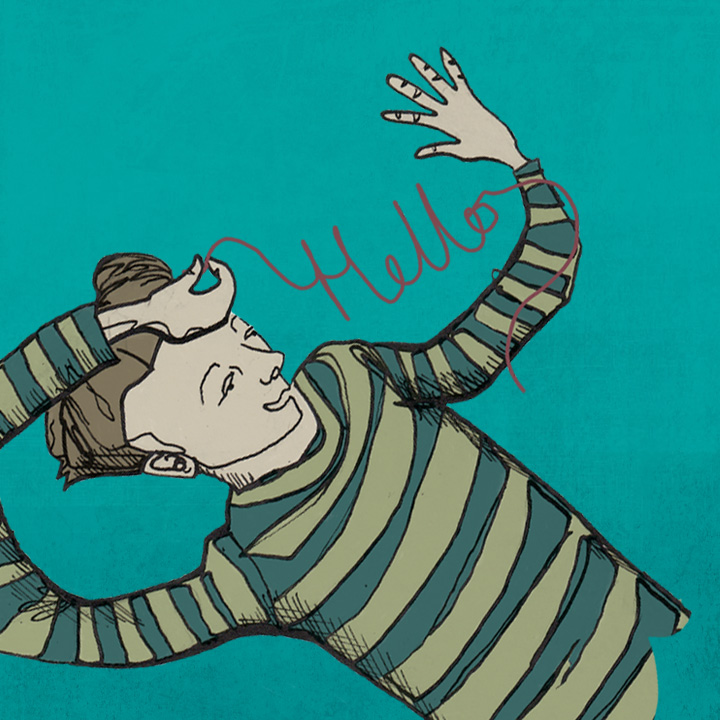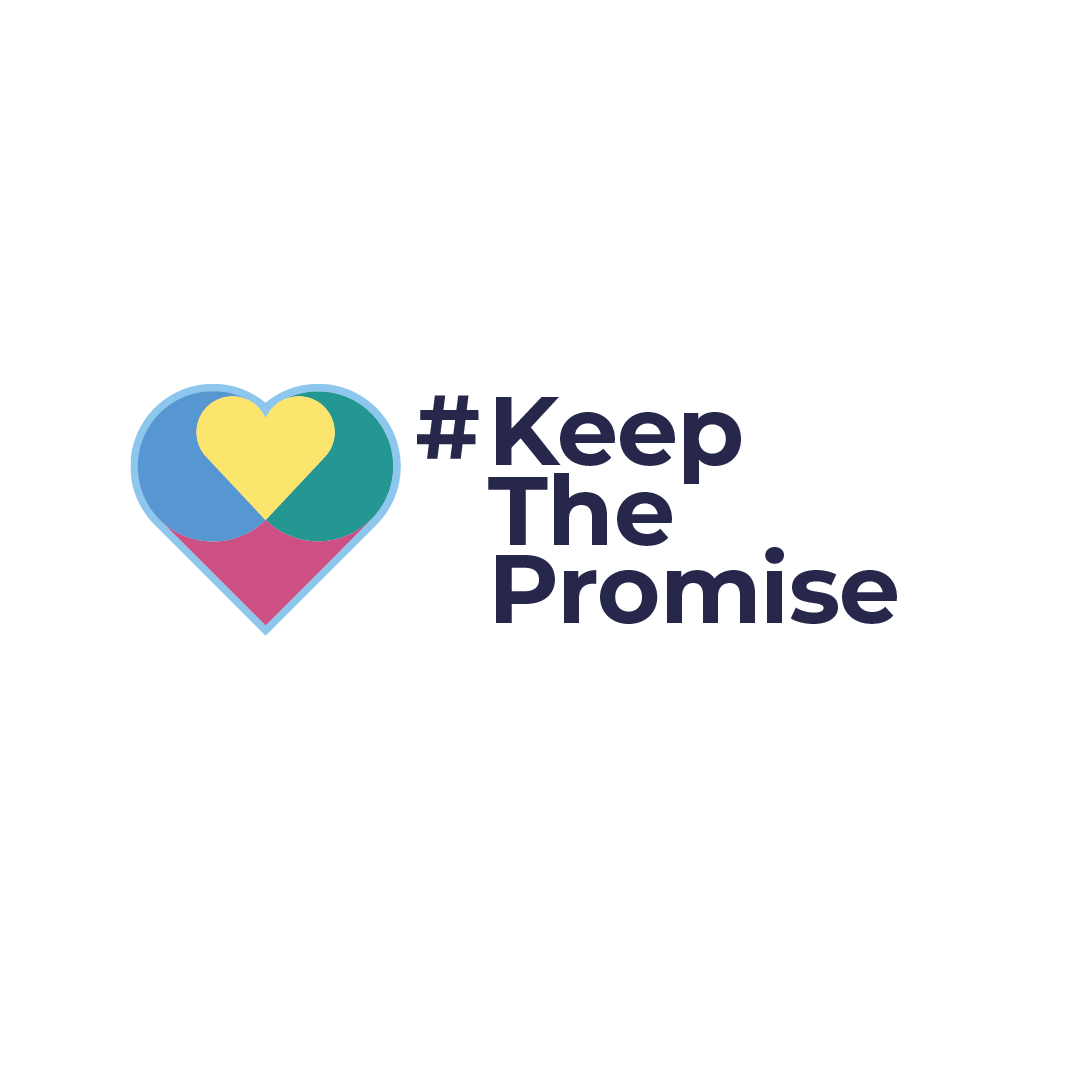My Emotions
After completing this section, you will be able to: name three parts that make up an emotion; recognise emotions; explain why emotions are important; describe the window of tolerance; name the five stages of the emotional arousal cycle; and, understand primary and secondary emotions.
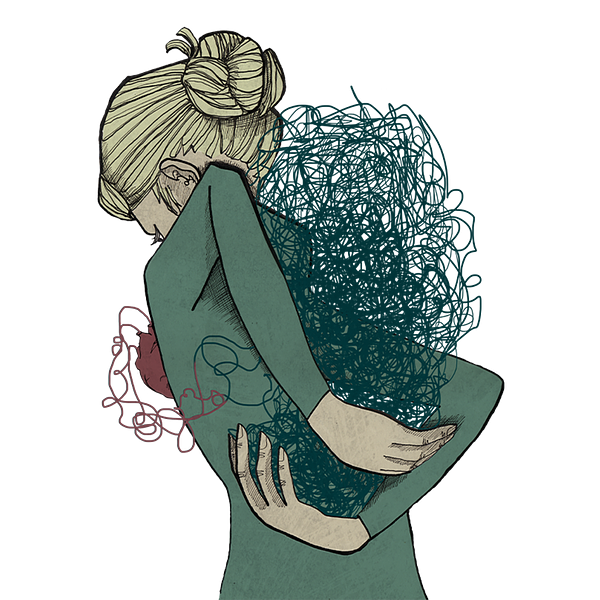
What are emotions?
Recognising emotions
Sometimes recognising the emotions we feel is hard. A good guide to knowing our emotions better is our own bodies. How do we feel physically? How are we behaving in response? The figure below shows how emotions are felt in the body.
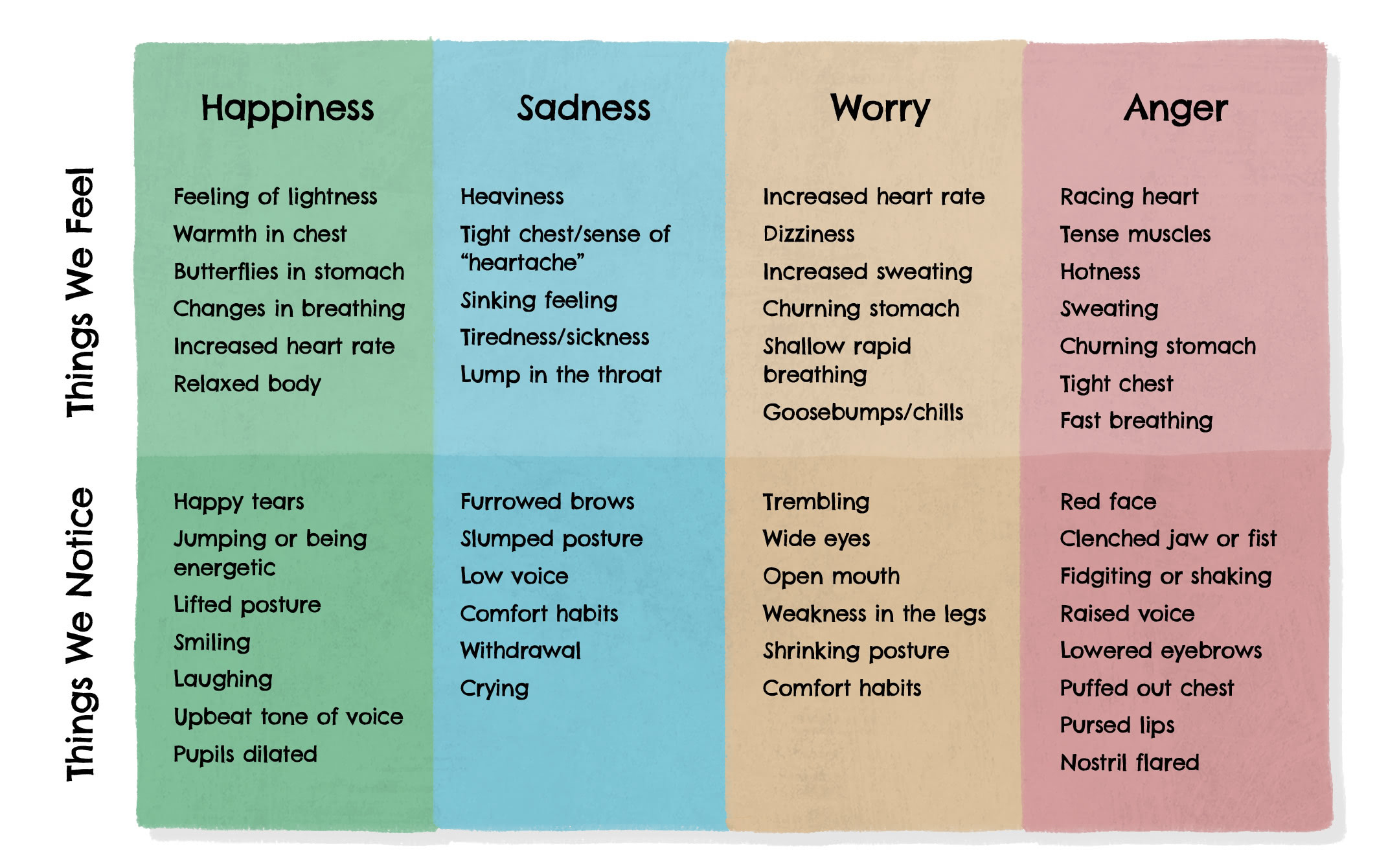
The Feelings Wheel
There are many different types of emotions. The more accurately we identify our emotions, the more we understand our needs. Use the ‘feelings wheel’ below to pinpoint how you feel.
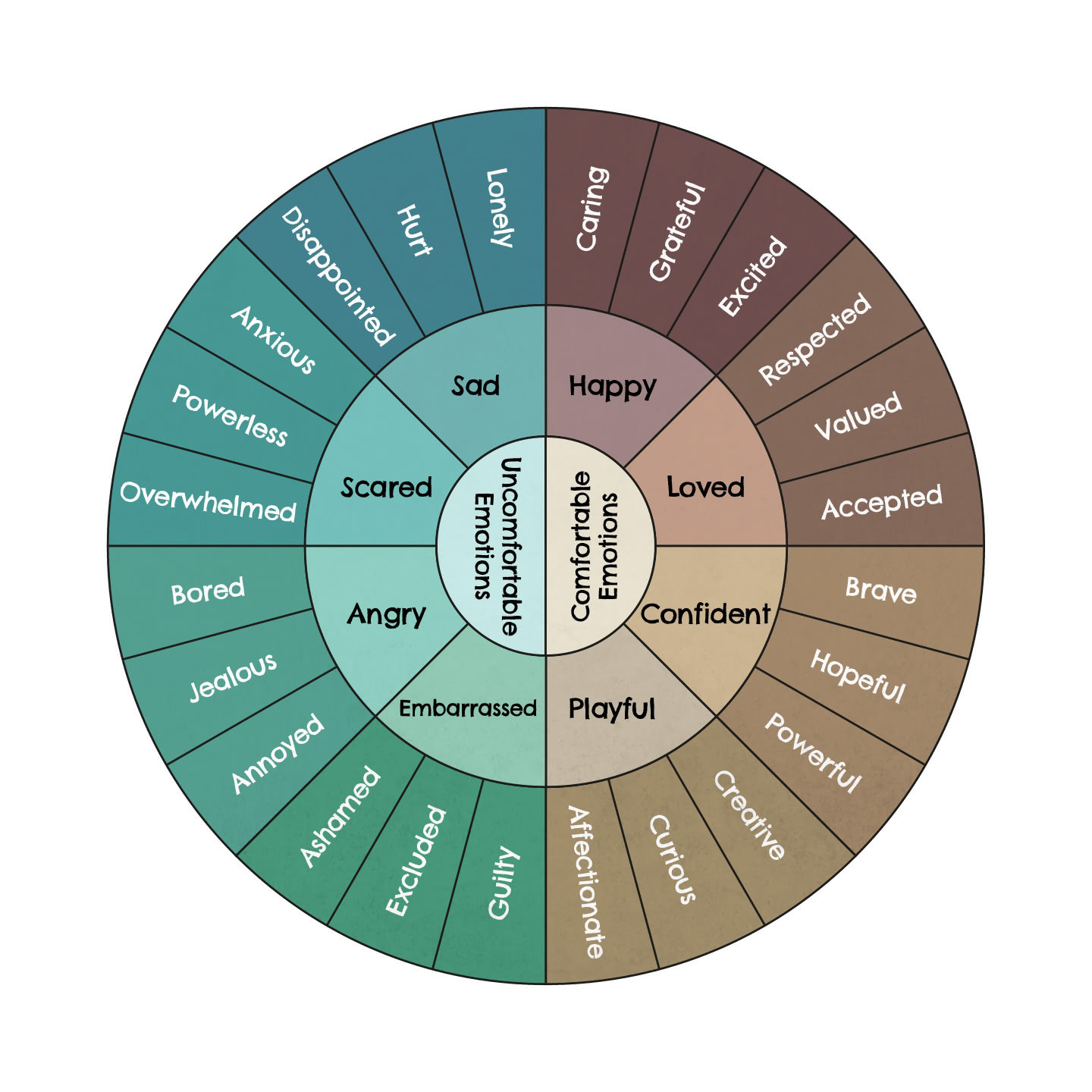
Emotions as messages
Emotions are messages. They are trying to tell us something. When we find ourselves in a tricky situation, emotions can help us make sense of what is important to us and what we should do about it.
Window of tolerance
Emotions become unhelpful if over-regulated or under-regulated. When we can cope with our emotions in a healthy way, we call this our ‘window of tolerance’, which is the ‘green zone’ below. When we can’t cope, we move into our ‘red zone’ where emotions are under-regulated. If we can’t feel or recognise our emotions, we might have moved into our ‘blue zone’, where emotions are over-regulated.
Our window of tolerance can grow and shrink depending on who we are with, what's going on in our life, our past experiences, and how much sleep we've had.
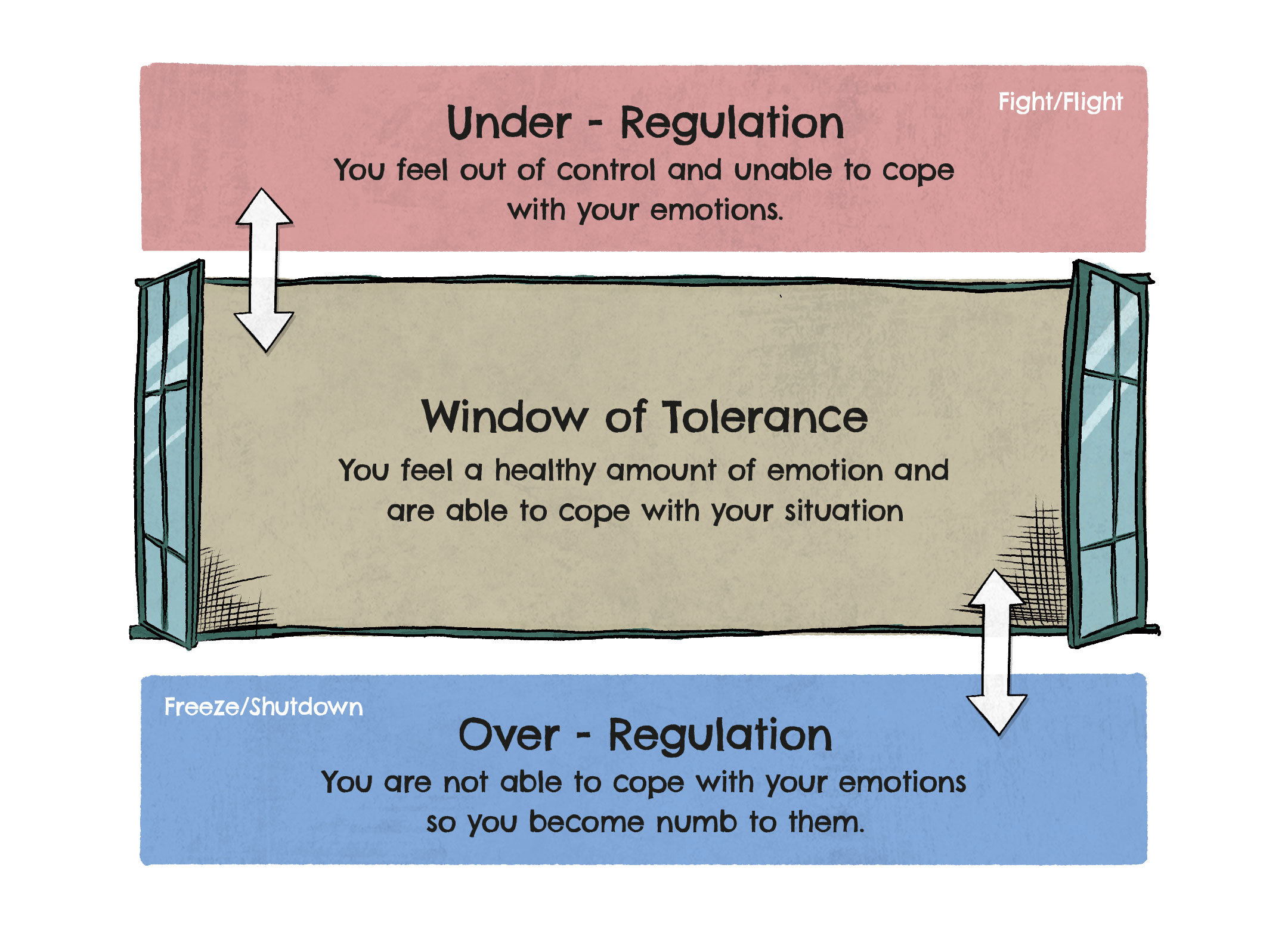
Emotional arousal cycle
Follow the ‘Emotional Arousal Cycle’ below and you’ll recognise the path we take when overwhelmed by emotions. In the ‘Crisis Phase’, we struggle to control our urges. What do you think might be your triggers that set you off down this path? How might we recognise our ‘Escalation Phase’ to stop ourselves reaching crisis point?
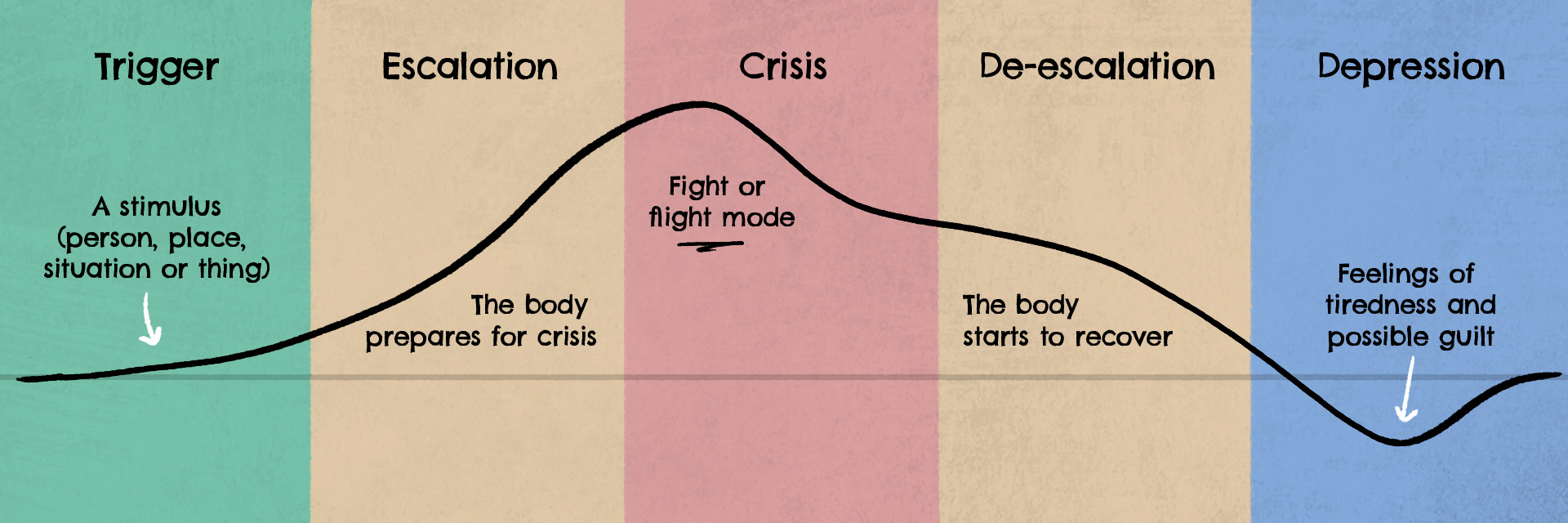
Emotion iceberg
There are two types of emotions: primary and secondary. So far, we have been talking about primary emotions. Sometimes we only see the secondary emotion and have to go back to figure out what our primary emotions are to understand how we’re feeling. Like an iceberg, we only see what’s on the surface – but there is more going on underneath.
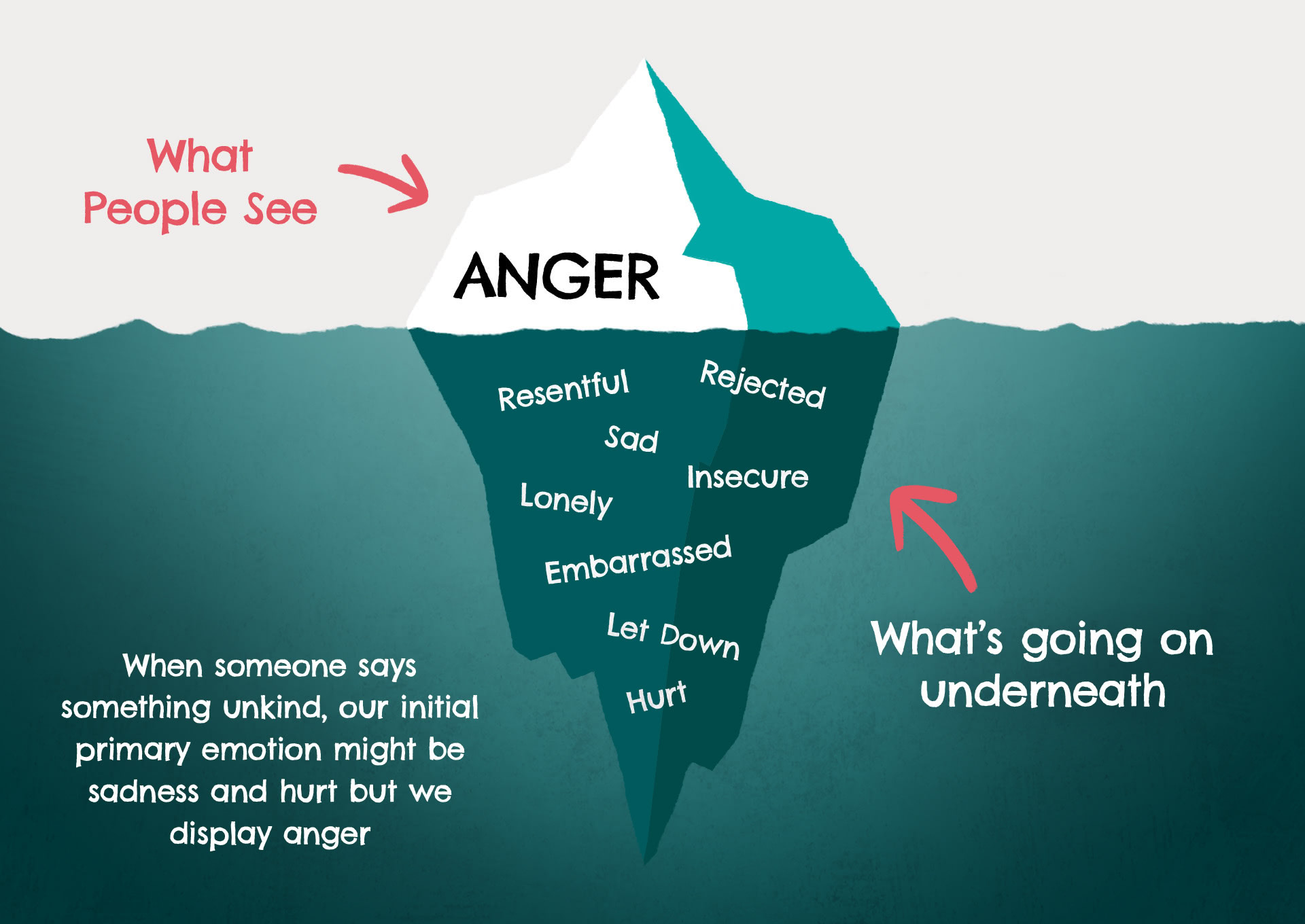
Summary
- Emotions are made up of three parts: the subjective experience, the physiological response, and the behavioural response.
- Sensations in the body can help us recognise our emotions.
- Behavioural responses like facial expressions, body language and movements can help us recognise other people’s emotions.
- Emotions are like messages to the brain carrying important information about what we need.
- When we are in our window of tolerance, we are able to cope with our emotions.
- The Emotional Arousal Cycle maps the phases we go through when we’re triggered.
- Primary emotions are the raw emotions. Secondary emotions can mask primary emotions.
It's not the end of the story!
If you want to learn more about yourself, choose one of the modules below.

